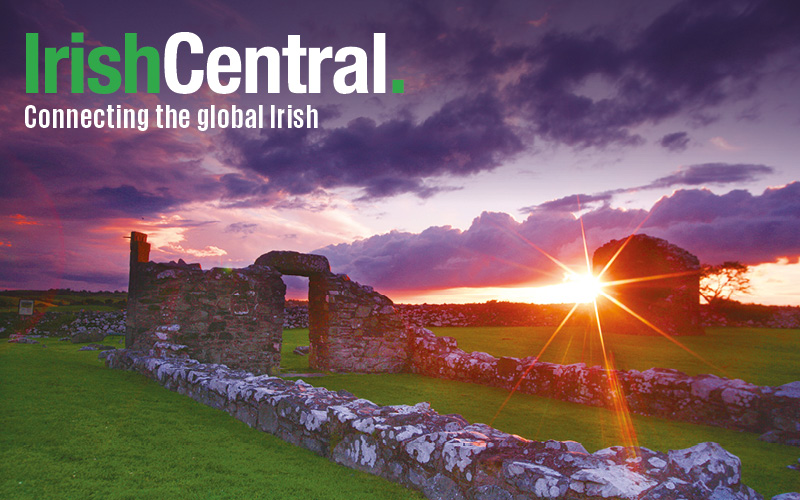Irish Network Seattle, Irish Heritage Club, Irish Consulate of Western USA and other organizations helped Sea-Tac Airport make a compelling presentation to Aer Lingus. Now their new direct route will start in May!
Irish Network Seattle, Irish Heritage Club, the Irish Consulate of Western USA and other social and business organizations have helped Sea-Tac Airport make a compelling presentation to Aer Lingus on the commercial viability of direct flights between Seattle and Dublin, and Aer Lingus will be starting non-stop flights between these cities on 18 May 2018.
Have you ever deliberately flown over your destination, landed in another city an hour or more to the east, waited, boarded another airplane and flown back westwards to finally land where you wanted to? If so, you may be familiar with the traditional routes between Seattle and Dublin, routing via London Heathrow, Paris De Gaulle, or Amsterdam Schiphol – adding maybe 5 hours to the journey time, not to mention added cost, and maybe a nail-biting wait in an endlessly-winding line for security, or to get your check at some not-so-fast-food café.
Add onto that time the third leg for people who live outside of Dublin, and have to go by bus or train to other points, and you have a tiresome journey with the traveler feeling like they’ve been through the wringer before they’ve even attended the conference, visited the relations, or driven the rental car on the wrong side of the road.
This is all about to change. On Friday 18 May 2018 at 19:20 Pacific Standard Time (PST), Ireland’s flag carrying airline, Aer Lingus, will inaugurate non-stop flights, four days a week, between Seattle-Tacoma and Dublin airports. The inaugural flight will depart Seattle at 19:20 and arrive 12:30 local time in Dublin the next day, a flight time of just 9 hours and 15 minutes – maybe less, depending on tail wind. Flights to Seattle from Dublin will depart at 15:50 local time, arriving in Seattle at 17:35 on the same day, PST, with slightly longer flight time of 9 hours and 45 minutes in the eastward direction. Flights will operate on Monday, Wednesday, Friday and Sunday. Aer Lingus will be reviewing options for expanding to daily flights, following their success in other cities where they inaugurated flights less than daily, and then managed the growth. Boston and New York grew this way, and now operate "double daily."
It is fitting that April 2018 will mark the anniversary of the inauguration of Transatlantic flights by Aer Lingus, which started in 1958 with a single route between Dublin, Shannon and New York. Sixty years later, Aer Lingus is the first airline to directly link Dublin with the Pacific Northwest.
What leads to a Sea(Tac) Change of this nature? A lot of hard work and data analysis, to begin with. It is the Airport that makes the sales pitch to international airlines, showing the benefits of serving their locality, explaining risk mitigation, and highlighting incentives. Says Kazue Ishiwata, Seattle-Tacoma airport's Senior Manager of Air Service Development, "Sea-Tac went beyond the usual effort" when preparing the pitch for Aer Lingus, providing a large amount of information – a 50-60 page presentation, covering business and tourism analysis from both ends of the transatlantic route, data simulations, and expert analysis of passenger data from millions of records that span many years and flight routes. The data showed that, "Ireland is the largest unserved market in Europe from the Seattle area," says Ishiwata. Flights from the more densely populated cities of San Francisco and Los Angeles currently operate to Ireland 4-5 times a week in the winter months and extend to daily services for the summer season.
People who were involved in the effort also mention luck and timing as a big factor – by coincidence, Matthew O'Toole, a Board Member of Irish Network Seattle, had started a committee to work on direct flights at the same time that Sea-Tac was honing research into SEA-DUB opportunities. When the committee reached out to Sea-Tac, they made an instant and firm connection and worked together over a period of many months before approaching the airline. Developing friendships along with cross-community business relationships, Ishiwata became a member of Irish Network Seattle herself - "probably the only one with Japanese heritage." What motivated O’Toole to take on a project that was expected to take years, and involve ongoing work with people across the globe (on top of a busy day job in a local Tech giant)? "One of the main reasons I decided to set up this committee was through my own, and many other experiences of missed connections or delays in multiple airports around the US and Europe while travelling between both cities. Travelling to my family in Galway, my journey time could typically have been about 24 hours door to door!" he says. In addition, he learned that some airlines had previously investigated and passed up on the opportunity to launch direct flights from Seattle to Dublin. Only slightly grinding his teeth, he says, "I was determined that the next time around this route would not be overlooked."
O'Toole's committee gradually expanded as more people got involved, and ultimately the people supporting Ishiwata and her team represented a great intersection of Seattle and/or Irish trade, business and heritage groups, including – and not limited to – Irish Honorary Consul to Washington State, John Keane, - “a gem of the Community” who leads the Irish Heritage Club, Consul General of Ireland to Western USA, Robert O'Driscoll, Irish Industrial Development Authority (IDA), the Port of Seattle, the Seattle Metropolitan Chamber of Commerce, Seattle Tourism, Visit Seattle, Seattle Trade Development Alliance, WA State Department of Transportation, representatives of bold-faced Tech companies such as Amazon and Microsoft, Illinois State Senator Billy Lawless, and Mark Redmond of the American Chamber of Commerce in Ireland. Alongside business statistics and projections, Aer Lingus was offered corporate membership of the Irish Network Seattle and the Irish Heritage Club, and ongoing promotion from the Irish business and cultural community in the region.
Another timely element in the decision-making process was Brexit. The likely withdrawal of the United Kingdom from the European Union is scheduled to take place in March 2019. After that, the UK’s administration of documents for EU travelers will become more complicated, and lines at UK airports will grow longer. Dublin Airport already offers pre-departure US immigration and customs inspections, which saves time after arrival in the USA. The tightening of restrictions and the complication of travel paperwork after Brexit could help Dublin Airport to replace Heathrow as a popular transfer-point for travelers between the European Union and the USA.
On the Seattle side, the region has been growing fast – for a time in 2017 there were more construction cranes in Seattle than in any other city in the USA. The housing market is red hot. Corporate giants and start-ups alike are setting up shop. Ishiwata outlines the growth with a few simple statistics – in 2011, Sea-Tac Airport was 17th in terms of passenger volumes in the USA. In 2017, it was 9th. In 2017, Sea-Tac attracted four new airlines – Virgin Atlantic, Eurowings, Aeromexico and Norwegian. In 2018, the list will grow to include Thomas Cook (to Manchester), Air France, and Aer Lingus.
Sea-Tac and collaborators finally finished their research and preparation, and in September 2017 Ishiwata formally made the Air Service Development presentation to Aer Lingus. The review and negotiation process has been known to take years, however by November 2017 Aer Lingus was ready to make a deal. Good timing and a lot of supporting information from the Irish and local business communities had helped to kick-start her presentation, however when Ishiwata met Aer Lingus, they were already interested in Seattle.
Airlines continuously evaluate routes, and their network planning teams use travel data – where are people traveling, for what purpose? – to drive business decisions around increasing or decreasing travel channels in different locations. The airline also has corporate relationships with large multinationals, many within the Tech sector and headquartered in both Seattle and in Ireland. Said Declan Kearney, Aer Lingus Director of Communications, "Seattle presents a rich mix of demand - a healthy combination of Transatlantic leisure, business and VFR (visiting friends and relatives) traveling in both directions."
The Seattle-Dublin route is part of a broader expansion strategy for business in the North Atlantic, and - having introduced six new Transatlantic routes since 2015 – Aer Lingus is one of the fastest-growing N. Atlantic carriers. Other factors that were taken into account included the strength of the dollar which encourages tourism from the USA, as well as Ireland’s performance in the tourism sector over recent years. Ireland’s tourism agencies are predicting that North America will soon overtake the United Kingdom as the number one source market for inbound tourism.
Based on feedback from flyers, Aer Lingus received a 4-Star rating in 2016, and is the only 4-Star airline between Ireland and the USA. In addition to financial considerations, Aer Lingus is partnering with state agencies in a drive to welcome the Diaspora home.
News of the SEA-DUB direct flights was greeted with outpourings of joy from business people and the Irish community on both sides of the Atlantic – who doesn’t want to see reduced flight-time and ticket price? And there are benefits to the host cities too: the mission of Seattle-Tacoma Airport is to advance the Puget Sound region as a leading tourism and business gateway, and International service in a region is proven to generate business activities. Ishiwata’s research shows that business and tourist growth will be there to meet the investments on land and in the air, and meanwhile the Port of Seattle is building a new, expanded International Arrivals Facility at the Airport to meet an already-growing regional demand for international service.
Aer Lingus is making the biggest investment of all. The largest cost when starting up a new route is investment in the airplanes themselves, and the airline is purchasing an additional Airbus A330 aircraft for this route. The basic rate for the Airbus A330 is about 250 million dollars – which, operating at 4 days a week, means a commitment of 130M dollars. The airline also has to fund new route marketing support, public relations services, and publicity for the route – with a total marketing budget in the USA and Ireland that adds up to tens of millions of dollars. The growth in flights will lead to increased jobs as well as tourism and business opportunities.
Aer Lingus's aim on any new route launch is to make money in its first year, and the target across their International Airlines Group (with other carriers including British Airlines) is 15% return on invested capital. Aer Lingus is one of most profitable airlines in the region – even compared with low-frills Ryanair, with whom they have been competing for over thirty years - and made a 23% return on investment in 2017. In a wry moment, Communications Director Kearney credited Ryanair with helping make Aer Lingus successful - the tight competition between the two airlines forcing Aer Lingus to drive up efficiency while driving down costs.
So roll on May 18. No more worries about a missed connection, or that blanketing fog over south England on 17th December 2016, that diverted all planes to sit on the tarmac in places like Newcastle - while the sun sparkled on Dublin Bay. We all have one of these stories. From now on, Seattle-Dublin flights will be sweet, and short.
This article was submitted to the IrishCentral contributors network by a member of the global Irish community. To become an IrishCentral contributor click here.




Comments